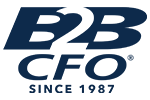
Succession Planning Where Do We Go From Here
Posted on March 31, 2020 by Terry Eve
When considering succession planning for a closely held business there are a number of interrelated issues, such as:
A) Is it a family operated business?
B) Are you the Owner actually the business?
C) What area besides Sr. Management may require a succession plan? and
D) How do you identify & qualify successors?
Family Owned and Operated
Turning over the reigns of a family owned business can be fraught with possible pitfalls. If the family member does not have the required skills, training, or desire, can you really hand over the company to them, just because they are a family member?
At a recent seminar the speaker, Mr. Chris Curtain of Banker’s Advocate, said to consider the “See you at 30” rule when considering the introduction of family members to firm management. That is to have the family member work in industry outside the family business to allow them time to develop skills and a separate identity prior to becoming part of company management.
For example, if the family member plans to have a finance or accounting background, perhaps a stint in public accounting or banking will help prepare them for their future duties within the family enterprise. If the position requires technical training, allow a third party to bear that cost and then interject fresh ideas and thinking into the company at the time they join the company business. By age 30, the family member should be better prepared professionally and viewed more positively by company “non” family members as a contributor.
You Are the Business
This is a tricky problem to solve and may take a long time to make sure you get it right. If you are the business and you leave, there is no business. Typically this is related to the owner being a “One Man” band in a key area of company operations. Frequently this is sales, and customer relationships. It may be because of certain expertise and professional designations. It may mean that the only exit strategy is to simply “close the doors” to a lifetime effort.
The solution is to identify the things that can not be easily replaced and develop those skills and transfer the knowledge to new individuals within the firm. I would suggest that due to the nature of this investment and the “portability” associated with someone who is trained (and then could potentially set out on their own or join another firm), that agreements are put in place to protect the company and the shareholders. Formal agreements essentially handcuffing the individual to the firm are a key consideration. Can you imagine getting to the point of retirement, having spent several years in preparation, only to have your planned successor walk out the door and become a competitor?
What other areas need a successor?
One business I know lost a key sales person in an automobile accident. The division never fully recovered from the loss. What are the key people in the organization where the company lacks depth? Have you given any thought to what happens if that person suddenly leaves the company? Having a plan, possibly including key man life insurance, is critical to keep the organization on track. You don’t want an employee to hold too much leverage either. So a succession plan protects the company from a number of possible problems.
How do you identify and qualify successors?
Start with an organization chart of the entire company. Identify the individuals that hold the key positions. In a normal career path, what would be their likely next step? Are they the right person for that role? If not, who is? If they are not in the company now, how will you source that person? What are the qualifications, job descriptions, and training that will be required to replace each key position? And then who back fills the holes they leave? What is the expected time to fill the vacancy and how will you bridge that time gap?
From the organization chart map out each of the key positions, identify possible replacements and when they may be ready to take the position, such as 1) Now; 2) 1-2 years; 3) Over 2 years; 4) Not at all. Define and document the requirements in detail including job descriptions, special training and other qualifications for the role in question. Build a career path for other employees to attain the elements necessary to become a successful successor.
For example, you have a dynamic sales team with a V.P. of Sales that has a demonstrable track record of success and he leaves for greener pastures. Now what? A good succession plan would show 1) Who is presently ready; 2) Who may be ready and 3) the time frame when others may be ready. You select the best prepared or decide to hire outside and execute the decision. Without this effort, you would still need to perform this work, but in crises mode.
If this sounds like a lot of work, it is. But when the time comes to execute the succession plan to replace a key employee, preparation is critical to the ultimate success. And when time is of the essence, the preparation will pay off many times over.

